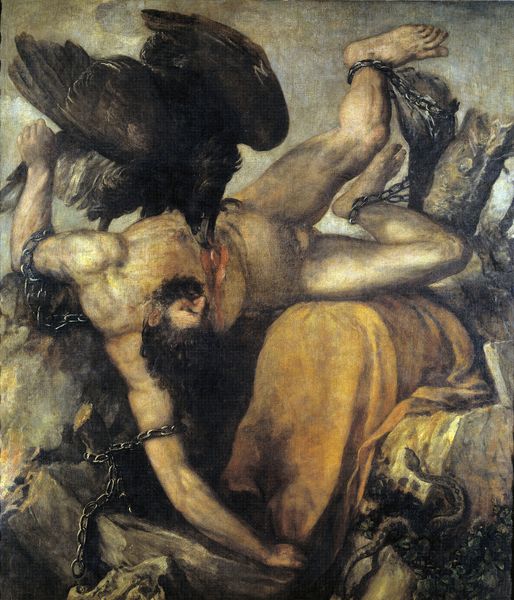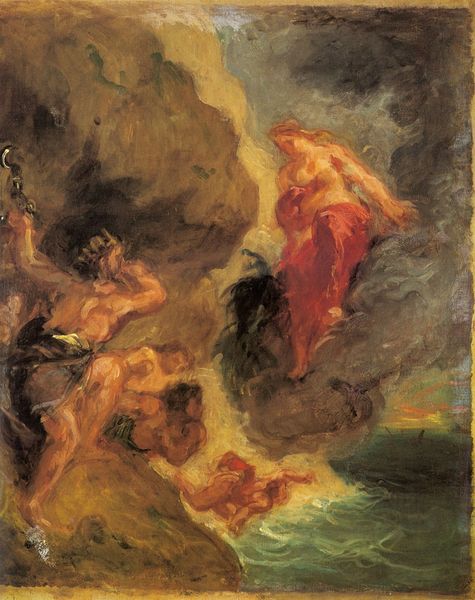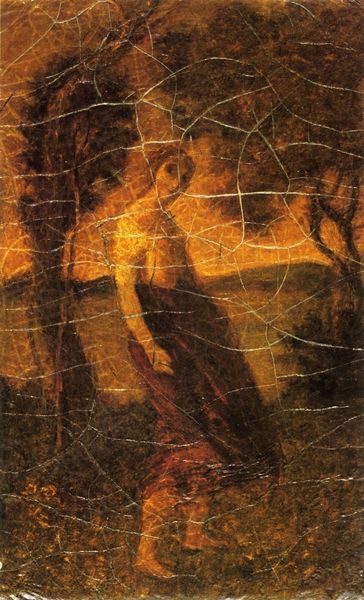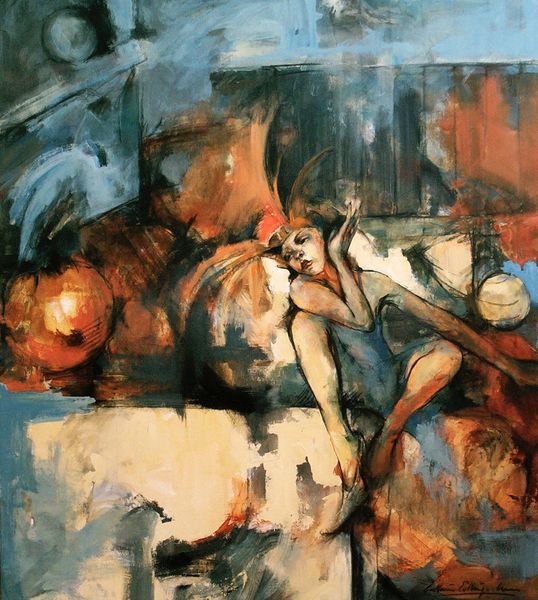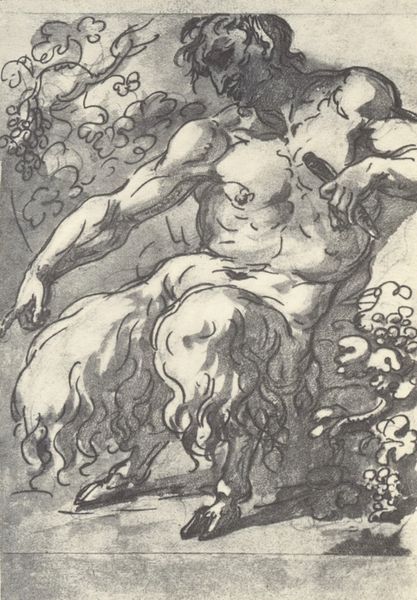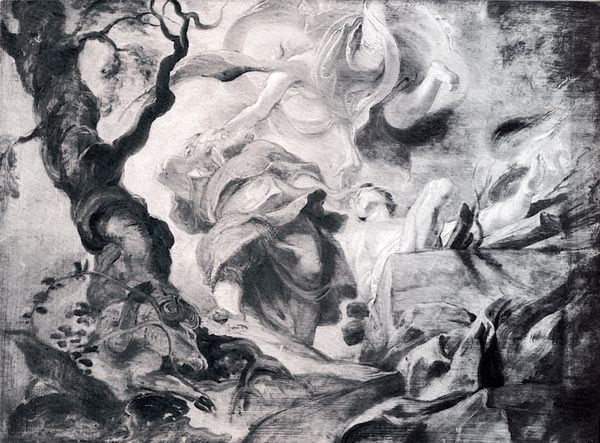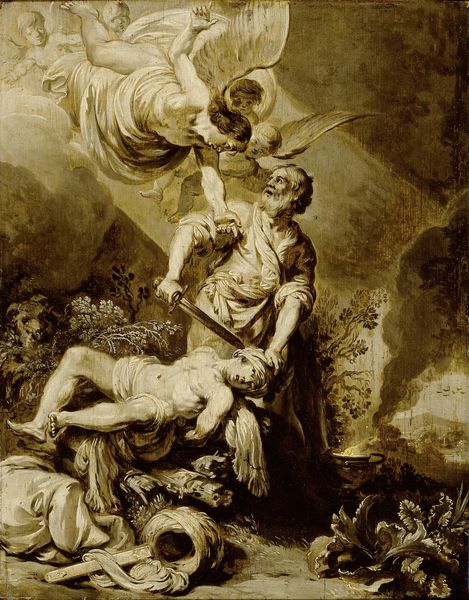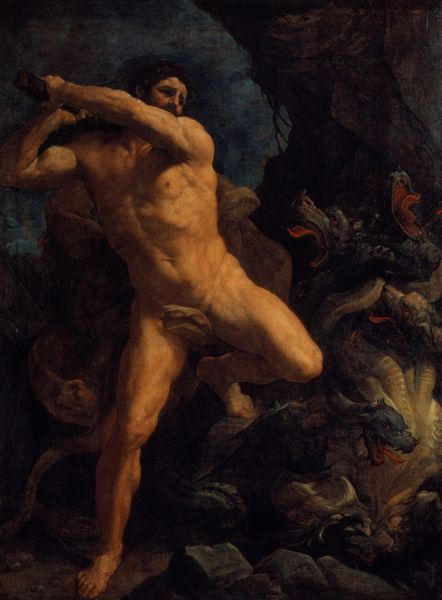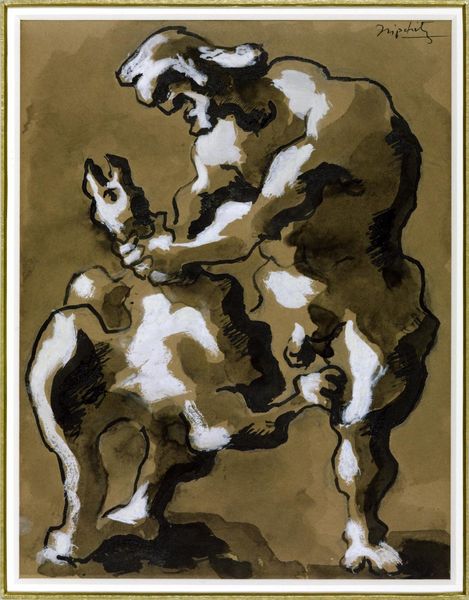
Copyright: Public domain
Curator: Honoré Daumier's "The Intoxication of Silene," an oil on canvas produced around 1850. It presents a frenzied scene ripped straight from mythology. Editor: Chaotic! My initial reaction is bewilderment. There’s this vortex of figures, and the light, that yellow, jaundiced light, is unsettling. It gives everything a sense of feverish delirium. Curator: Daumier's career was intrinsically tied to social commentary and political critique. But, here he is, seemingly lost in ancient myths, specifically revolving around Silenus, a companion and tutor to the wine god Bacchus. The figures are in a bacchanal. Editor: Given Daumier’s broader work, can we view this purely as historical painting? It strikes me that "intoxication" operates on multiple levels here. Yes, there's the literal wine, but I'd suggest we also see the intoxication of power, perhaps the uninhibited excess that he witnessed within the bourgeoisie, or within political circles of France, at the time. It feels like a commentary on something much larger than just the mythological subject itself. Curator: Interesting angle. Certainly, Daumier used historical and mythological subjects as allegories before. Consider the rise and fall of governments that Daumier had lived through at this point in his life. Do you see the collapse or instability in the canvas itself? The chaos of figures tumbling is echoed in the muddy palette, it seems almost as though everything is folding in on itself. Editor: Exactly! It’s almost violently expressive, prefiguring the Expressionists that would arrive much later. There’s something almost carnivalesque, almost grotesque in the bodies’ treatment—the yielding fleshiness. There’s a breakdown of civility here. In this painting, Daumier captured this overwhelming and unsettling mood in his very specific technique. Curator: And while the romantic era painters explored myth for the sake of drama, and sublime, and emotion—Daumier injected his mythscapes with something more politically grounded, wouldn't you say? Editor: Precisely. Seeing a work like this forces us to question easy categorizations and linear artistic narratives. It calls us to confront uncomfortable questions about who we are. Curator: It reveals to us how mythology might have allowed him some means to get away with social commentary on touchy subjects that might have otherwise been forbidden. Editor: It truly reminds me that the past and the present are inextricably linked. I keep seeing today in it, the way people react and act to certain things now.
Comments
No comments
Be the first to comment and join the conversation on the ultimate creative platform.

